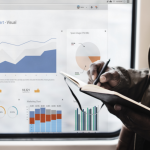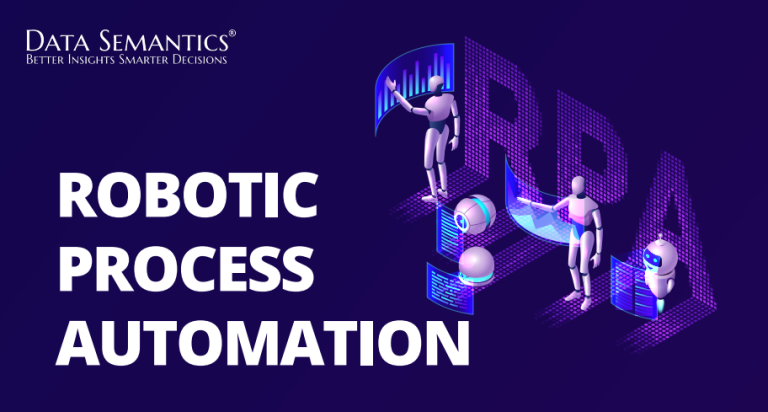The idea of big data has been present for several years, and many organizations recognize that they can extract considerable value from the data that flows into their business if they capture it all, including real-time data, and apply analytics, particularly those involving advanced techniques such as artificial intelligence. However, even before the term “big data” emerged, as early as the 1950s, companies were utilizing fundamental analytics, including numbers in a spreadsheet that was manually analyzed, to discover insights and patterns.
One of the most significant advantages of big data analytics is the speed and efficiency with which it operates. In the past, companies would collect data, run analytics, and uncover insights that could be used for future decision-making. However, with the advances in big data analytics, businesses can now collect and analyze data in real-time, allowing them to make immediate, informed decisions. This enhanced ability to work quickly and remain adaptable provides companies with a competitive edge that was previously unavailable.
Table of Contents
Importance of big data analytics
The significance of big data analytics lies in its ability to help organizations leverage their data to identify new prospects, leading to more intelligent business decisions, more effective operations, increased profitability, and customer satisfaction. Companies that utilize big data and advanced analytics can derive a multitude of benefits. Let’s discuss a few.
1. Cost reduction
This is a major benefit of big data technology. Cloud-based analytics, for instance, can drastically reduce expenses associated with storing vast amounts of data, such as a data lake. Furthermore, big data analytics enables companies to identify more efficient ways of conducting business, leading to cost savings.
2. Faster and better decision-making
Big data analytics can facilitate quicker, superior decision-making. By harnessing the speed of in-memory analytics, coupled with the capacity to examine new sources of data, like streaming data from IoT, companies can instantly analyze information and arrive at a swift, knowledgeable conclusion.
3. Developing and selling products faster
Big data analytics can assist in the development and marketing of new products and services. By comprehending customer needs and satisfaction through analytics, businesses can fulfill customer desires promptly. Big data analytics provides organizations with a better chance to develop innovative products that meet customers’ evolving needs.
How big data analytics works and the key technologies behind it
Big data analytics is not restricted to any one technology. While advanced analytics can be implemented on big data, several technologies operate together to provide maximum value from the data. Here are the key players –
Cloud Computing
Cloud computing is a subscription-based delivery model that offers the scalability, quick deployment, and IT efficiencies necessary for effective big data analytics. It is attractive to businesses of all sizes because it eliminates numerous physical and financial obstacles associated with aligning IT requirements with ever-changing business objectives.
Data Management
This is crucial, as data must be high-quality and well-governed before it can be analyzed consistently. Because data flows in and out of an organization continuously, it is necessary to create repeatable processes to build and maintain data quality standards. Once data reliability is achieved, companies should establish a master data management program that unifies the entire enterprise.
Data Mining
Data mining technology enables the examination of vast amounts of data to identify patterns, which can be further scrutinized to help answer complex business questions. By utilizing data mining software, you can navigate through the cluttered and repetitive noise in data, extract relevant information, use it to evaluate probable outcomes, and accelerate the decision-making process based on informed choices.
Data Storage
Data storage is essential, including the data lake and data warehouse. It is necessary to store extensive amounts of structured and unstructured data, making it accessible to business users and data scientists. A data lake promptly takes in vast quantities of raw data in its original format, making it the perfect storage option for unstructured big data like social media content, images, voice, and streaming data. A data warehouse stores substantial amounts of structured data in a centralized database. Both storage approaches are complementary, and many organizations use both.
Hadoop
Hadoop is an open-source software framework that enables the storage of extensive data and permits the operation of parallel applications on commodity hardware clusters. As data volumes and varieties continue to increase, Hadoop has become an essential technology for businesses, and its distributed computing model processes big data quickly. Another advantage of using Hadoop is that its open-source framework is free and utilizes commodity hardware to store and manage vast quantities of data.
In-memory Analytics
In-memory analytics is a technology that allows for the analysis of data from system memory instead of the hard disk drive, resulting in immediate insights that can be acted upon quickly. This method eliminates data preparation and analytical processing delays, enabling the testing of new scenarios and the creation of models. It not only provides organizations with an easy way to stay agile and make better business decisions but also enables them to run iterative and interactive analytics scenarios.
Machine Learning
Machine learning is a subset of AI that enables machines to learn on their own. It allows organizations to automatically produce models that can analyze bigger and more complex data, delivering faster and more accurate results on a large scale. By building precise models, businesses can better identify profitable opportunities and mitigate unknown risks.
Predictive Analytics
Predictive analytics is a technology that uses historical data, statistical algorithms, and machine-learning techniques to identify the probability of future outcomes. It provides the best possible assessment of what will happen in the future, allowing organizations to make better-informed business decisions. Predictive analytics has several applications, including fraud detection, risk assessment, operations management, and marketing. By using this technology, organizations can mitigate risks and identify profitable opportunities, giving them a competitive edge.
Text Mining
With this technology, businesses can extract insights from unstructured text data found on the web, comment fields, books, and other text-based sources. By analyzing this unstructured data, businesses can uncover insights and trends that they may have missed otherwise. Text analytics uses natural language processing and machine learning technology to sift through emails, blogs, Twitter feeds, surveys, and more to provide a detailed analysis of large amounts of data, helping businesses discover new topics and relationships.
Ready to data-proof your business?
With the rise of technology and the massive amount of data generated every day, big data analytics has become a vital tool for businesses to make informed decisions, create innovative products, and stay competitive. By using the technologies and techniques discussed, businesses can effectively store, manage, analyze and extract valuable insights from their data. Make the right decision by applying analytics to your big data.













